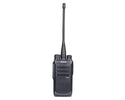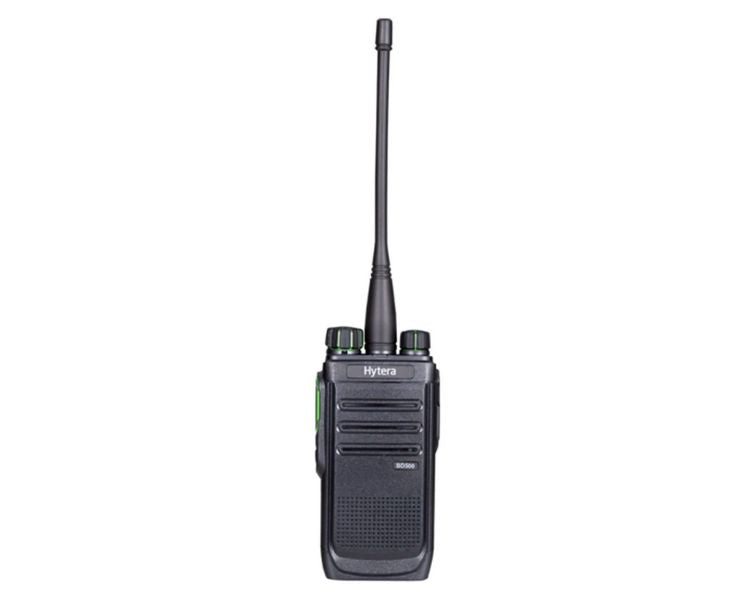
The History of Two-Way Radio Communication
, by Joseph Gabriel, 6 min reading time

, by Joseph Gabriel, 6 min reading time

Cell phones and video calls make radios look ancient. Although two-way radios aren’t the most common form of communication used today, they still serve a valuable purpose in the professional world. Perhaps understanding the history of two-way radio communication will help you to understand where these devices originated, their purpose, and why they remain beneficial today.
Several inventions and discoveries were made before creating radios. Here are two monumental moments in history that led to the first two-way radio.
The telephone and telegraph were monumental stepping stones towards the birth of two-way radio communication. The telegraph, developed in the 1830s and 1840s, introduced the concept of instant communication over long distances. It used Morse code for messaging.
In 1876, Alexander Graham Bell invented the telephone. Bell’s telephone allowed the transmission of voices across long distances. These two technologies were instrumental in shaping the understanding of electrical signals, leading to the realization that voice and code could be sent without physical wires.
In 1886, German physicist Heinrich Hertz organized various experiments to test the presence of electromagnetic waves. James Clerk Maxwell devised this theory, but Hertz decided to use a simple spark gap as the transmitter and a loop of wire with a small gap on the far side as his receiver to test it.
He observed that the spark generated in the receiver’s transmitter indicated the presence of electromagnetic waves. These waves demonstrated behaviors like light waves and were later renamed “radio waves.” His work dramatically advanced the understanding of electromagnetic theory and paved the way for future wireless communication developments.
The two-way radio couldn’t exist without its predecessor: the radio. This device, which can receive and transmit voice and music, was invented by an Italian inventor named Guglielmo Marconi. Marconi’s invention was based on the groundbreaking work of Heinrich Hertz and James Clerk Maxwell. However, it was Marconi who made the leap from using radio waves to transmit Morse code to transmitting actual sounds.
Marconi’s first radio device was rather primitive. He connected a telegraph key to a transmitter to send a radio wave each time he pressed the key. The receiver picked up these waves and translated them back in audible clicks.
Marconi initially used his device for transmitting Morse code, much like the telegraph. Nevertheless, he soon discovered that he could modify the transmitter and create continuous waves at different frequencies. This modification allowed him to send more complex signals, such as voice and music, over the airwaves.
In 1896, Marconi was issued a patent for his wireless telegraphy system. He had effectively invented the first practical radio. His invention laid the groundwork for the development of all future radio technology, including the two-way radios we still use today.
1937 marked the introduction of handheld radios due to the need for efficient and reliable means of communication on the battlefield in World War II. Traditional methods, such as sending messages or using wired telephones, were not practical during the time; they were slow, unreliable, and often disrupted by enemy action.
Canadian inventor Donald Hings created the “packset” or walkie-talkie, as people know it today. The military turned to Hings’ invention for assistance. Soldiers could communicate in real time regardless of their location. Troops could coordinate quickly and respond promptly to changing situations.
The handheld radio was compact, portable, and easy to use, making it ideal for the demanding conditions of warfare. Its introduction marked a significant advancement in military communication technology, setting a new standard that continues to influence modern military operations.
Information often gets lost in translation in history. As a result, there is great debate about who invented the first two-way radio. Let’s learn about the people striving to receive accreditation for these incredible technological advancements.
Frederick William Downie, a Senior Constable of the Victorian Police in Australia, is widely credited with developing one of the first truly mobile two-way radios. His invention in 1923 marked a significant turning point in the history of communication technology.
The impetus behind Downie’s invention was the need for efficient and reliable communication among police officers on patrol. Before the entrance of two-way radios, coordinating activities and responding to emergencies were significantly challenging.
Downie’s innovation allowed officers to communicate directly with each other and with their headquarters. This more direct communication immensely improved their ability to respond promptly and effectively to situations.
Downie’s two-way radio design was a breakthrough because it was truly mobile. Earlier attempts were often hindered by the size and portability of the equipment. Downie’s device was installable in patrol cars, thereby extending its range and utility. The Australian police greatly benefited from two-way radios and set the precedent for other police forces and organizations around the world.
During World War II, another company worked on comprising a handheld radio. Founded in 1928 by Paul V. Galvin and his brother Joseph E. Galvin, the Galvin Manufacturing Corporation, now known as Motorola, was instrumental in the invention of the two-way radio. The company initially focused on manufacturing battery eliminators, devices that allowed battery-powered radios to operate on household electricity.
The Motorola SCR-300 consisted of a battery, a transmitter, and a receiver housed in a backpack-like casing. Unlike previously large stationary devices, the SCR-300 was portable. This portability made the SCR-300 much more versatile and useful during battle.
The SCR-300 allowed soldiers in the field to communicate with each other over a limited range of frequencies. This communication occurred via amplitude modulation (AM), a method that varied the strength of the transmitted signal in proportion to the waveform of the sounds picked up by the microphone. It was a precursor to the more modern and efficient frequency modulation (FM) which changes the frequency of the transmitted signal.
Shortly after, Motorola developed an even smaller handheld radio, the Handie-Talkie SCR-536. It was far more compact, fitting into the palm of the hand, albeit with a shorter range and fewer capabilities. This invention pioneered the concept of truly portable handheld communication devices, influencing the design of modern two-way radios.
Two-way radios have undergone numerous improvements since their inception. First, the shift from AM to FM frequencies occurred, allowing for better signal quality and penetration of obstacles like buildings and foliage. Additionally, the devices have become more compact and portable, making them even more convenient for users.
A significant advancement was the invention of the repeater, a device that extends the range of two-way radio communication by taking a weak radio signal, amplifying it, and retransmitting it. The repeater also allows for an extended communication range and more reliable connectivity.
In recent years, the integration of GPS technology and encrypted communication has further enhanced the capabilities and security of two-way radios.
Each of these individuals involved in the history of two-way radio communication paved the way for modern-day uses. Every day, two-way radios continue to get better and better!
Atlantic Radio supplies modern, high-quality Hytera two-way radios that are incredible for communication on construction sites, in forested areas, and for emergency services. With the right handheld radio device, you’ll have access to reliable and efficient communication in the palm of your hand.
